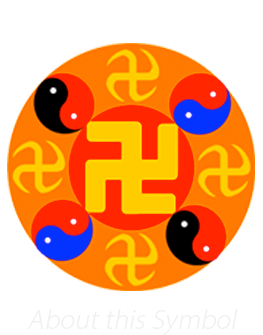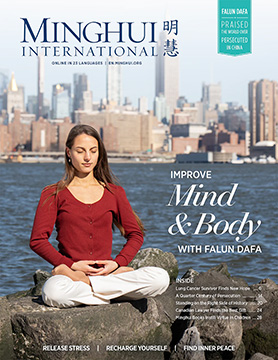(Clearwisdom.net) In China, the custom of considering the left side as male and the right side as female seems to have permeated all aspects of people's daily lives. How did this custom come into being? As the legend goes, after the ancestor of the Chinese people, Pangu, became a deity, his body parts and organs turned into the Sun, the Moon, stars, mountains, rivers, lakes, all things on earth, and all lives. The book Wu Yun Nian Li Ji, written by Xu Zheng during the Three Kingdoms Period, states that the Sun and the Moon of the Chinese nation were transformed from the two eyes of Pangu. The Sun God was Pangu's left eye, and the Moon God was Pangu's right eye. This was the origin of the Chinese traditional custom of "male left, female right".
This custom was also closely associated with the philosophy of the ancient people. In the traditional concept, the two opposite sides in everything were Yin and Yang. For example, everything could be differentiated by size, length, up or down, left or right, etc. Ancient people classified things that were big, long, up, and left as Yang, and things that were small, short, down, and right as Yin. The Yang was firm and strong, and the Yin was soft and weak. In terms of temperament, male is masculine, belonging to Yang--the left, while female is gentle and soft, belonging to Yin--the right. The concept of "male left and female right" is also reflected in the choice of wrist for taking one's pulse in Chinese traditional medicine. When feeling the pulse for diagnosis, taking the pulse on the left wrist was chosen for a male, and taking the pulse on the right wrist was chosen for a female.
In fact, the concept of "male left, female right" originated from the theory of Yin and Yang of the Tao school. Regarding Yin and Yang, things facing the Sun were classified as Yang, and the opposite were Yin. Later, the concept extended to climate, location, state of movement, etc. The theory of Yin and Yang indicates that all things in nature have two contradictory sides, Yin and Yang. The two sides are also complementary, and the movement of the unity of opposites is the fundamental cause for things to come into being, to develop, to change, and to die. As it was said in the book Huang Di Nei Jing - Su Wen, the 5th Article, "Yin and Yang is the way of Heaven and Earth, the law of all things, the mother of all changes, and the beginning of life and death."
Yin and Yang, can be used to describe opposites and to analyse the two opposite sides of matter. Generally speaking, things in violent motion, outward, upward, warm, or bright are viewed as being Yang. Things relatively still, inward, downward, cold, or dim are considered Yin. As for heaven and earth, the sky being light and clear, is considered Yang. The earth, being heavy and turbid is considered Yin. As for water and fire, water belongs to Yin, as it is cold and moist, while fire belongs to Yang for being hot and scorching.
The theory of Yin and Yang posits that the five elements (wood, fire, earth, metal, and water) represent the fundamental relationship of changes. The five elements are in continuous motion, impelling mutual generation and mutual restriction. This theory has had a deep impact on the development of ancient philosophies. Astronomy, meteorology, chemistry, mathematics, music, and medicine all attribute their development to the theory of Yin and Yang.
There is such a description in the "Taichi Chart" by Zhou Dunyi, "Limitless emptiness produces Tai Chi; the movement of Tai Chi generates Yang; when the movement becomes extreme, it turns to stillness, and the stillness generates Yin; when the stillness becomes extreme, it turns into movement again. Movement and stillness are the origins of each other; Yin and Yang are differentiated and stand as opposites." Therefore, "Tai Chi generates Yin and Yang" and "when the two interact with one another, the multitude of things are produced. Things produce other things and the changes are endless." This is the best and most comprehensive explanation of the concept of Yin and Yang by ancient scholars of The Book of Changes. The concept of "male left and female right" is also a way of expressing Yin and Yang in traditional culture.
Views expressed in this article represent the author's own opinions or understandings. All content published on this website are copyrighted by Minghui.org. Minghui will produce compilations of its online content regularly and on special occasions.
Category: Traditional Culture








